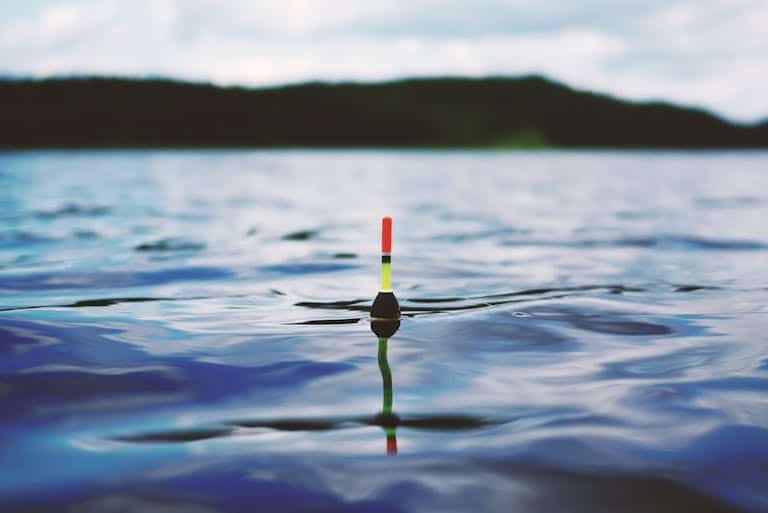Sonar fish finders revolutionize how anglers approach fishing by harnessing the power of sound waves to explore the underwater realm. Understanding how to interpret the information displayed on a fish finder screen is essential for maximizing its potential and improving your fishing success. You should learn the answer to the question, “How do you read Sonar fish finder?”
- Sonar fish finders utilize sound waves to detect underwater objects, including fish and bottom structures.
- The transducer converts the bounced-off sound waves into electrical signals.
- These signals are then displayed graphically on the fish finder screen, providing valuable insights into the underwater environment.
Is It Easy to Read a Sonar Fish Finder?
Reading a sonar fish finder can be relatively easy with some practice. The key is understanding essential elements such as water depth, bottom structure, and fish symbols.
Once familiar with these aspects, anglers can easily interpret the information on the screen, identifying fish size, movement, and underwater terrain. As experience grows, users can leverage advanced features for more detailed insights into the underwater environment.
How to Read Sonar Fish Finder: Step By Step
Understanding the information displayed on a sonar fish finder is crucial for anglers looking to enhance their fishing experience. So, how to read the sonar fish finder? Here are some critical steps to effectively read a sonar fish finder:
Step 01: Basic Elements of a Fish Finder Screen
To effectively use a fish finder, it’s crucial to comprehend the fundamental elements displayed on the screen. Each component offers valuable information that aids in locating fish and understanding the underwater landscape.
- Water Depth Display: Located in the top left corner, it provides real-time information about the depth of the water.
- Bottom Structure Representation: Displayed as a line along the bottom of the screen, it helps identify the type of terrain beneath the boat.
- Fish Display: Fish are represented as arches or dashes, with size indicating fish size and signal strength reflecting their distance from the transducer.
Step 02: Interpreting Fish Finder Symbols
Deciphering the symbols on a fish finder screen is crucial for distinguishing between different types of fish and understanding their behavior.
- Arches for Moving Fish: Moving fish are represented by arches on the screen.
- Dashes for Stationary Fish: Dashes represent the stationary fish.
- The thickness of Symbols: The thickness of the arch or dash corresponds to the strength of the signal, providing insights into fish proximity.
- Color Coding: The color of the symbols indicates the depth of the fish, helping anglers target specific areas of the water column.
Step 03: Identifying Bottom Structure
Accurately identifying bottom structure is key to finding optimal fishing locations. The fish finder screen displays different bottom types.
- Hard Bottom: Rocks or gravel show up as a strong, thick line.
- Soft Bottom: Mud or sand appears as a thin, light line.
- Vegetation: Weeds are depicted as a series of small arches or dashes.
- Underwater Structures: Solid lines represent the Docks or piers.
Step 04: Using Fish Finders to Locate Fish
Effectively utilizing a fish finder to locate fish involves strategically observing and interpreting the displayed information.
- Focus on Structure and Vegetation: Look for fish arches or dashes in areas with significant bottom structure or vegetation.
- Consider Fish Size: The size of the arches or dashes indicates the size of the fish.
- Utilize Depth Scale: Determine the fish’s depth using the scale on the fish finder.
- Move Slowly: Moving your boat slowly allows the fish finder to track the movement of fish accurately.
Step 05: Advanced Fish Finder Features
Some fish finders have advanced features that enhance your fishing experience and provide additional insights into the underwater world.
- Fish ID Feature: Identifies the fish species, offering targeted fishing opportunities.
- Down Imaging: Provides a more detailed view of the bottom structure for precise navigation.
- Side Imaging: Offers a comprehensive view of the bottom structure from the boat’s sides, expanding awareness of the underwater environment. Now you know the answer—how to read a sonar fish finder?
Conclusion
In conclusion, sonar fish finders are indispensable for anglers seeking to elevate their fishing skills. Mastering the art of reading a fish finder screen empowers anglers to identify fish, bottom structures, and underwater features accurately. By strategically using fish finders to track fish movements and employing advanced features, anglers can significantly improve their catch rates.
Embrace the technology, hone your skills, and watch as your fishing endeavors reach new heights with the aid of a sonar fish finder. I hope now you know “how to read sonar fish finder?”
Some of the links in this post are affiliate links. This means if you click a link and make a purchase we will receive an affiliate commission at no extra cost to you.
